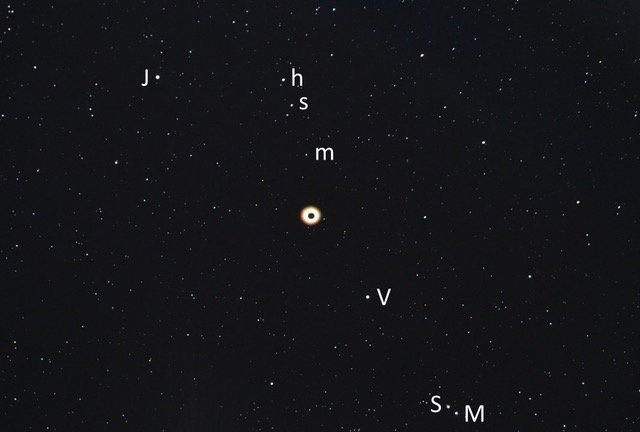
Countdown to the Eclipse: Seven Weeks Out!
Plan ahead to maximize your viewing experience.
I hope you are gearing up for the April 8 total solar eclipse. I certainly am. I recently visited the farm near Muncie, Indiana, where I plan to watch this thrilling event. The location will work well. I purchased two solar filters, one for a 127-mm Televue refracting telescope and the other for an eight-inch Dobsonian telescope, both at Johnson Observatory here at the Creation Museum. Those telescopes are reasonably portable, so I’ll take them along. As with the 2017 eclipse, I’ll take the observatory’s 3.5-inch Questar telescope too. I plan to attach my two Nikon digital cameras to the refractor and the Questar to document the entire eclipse. I’ll let people at my eclipse viewing party look at the sun through the eight-inch telescope. I also have a few hundred eclipse glasses to pass out to eclipse watchers.
If you want to watch this eclipse, you need to plan your location for viewing.
If you want to watch this eclipse, you need to plan your location for viewing. The maximum duration of totality will be along the centerline of the eclipse, but at the edges of the path of totality, you will see only seconds of totality, so you’ll want to be near the centerline to maximize the experience. This website has a map of the path of totality that you can magnify either by scrolling with your mouse or by using the + button on the left. Once you find your planned location, a click of the mouse will open a box that will give you important information, such as the time of the beginning and end of the partial phases, the beginning and end of totality (the most important things to know), and the elevation of the sun at mid-eclipse. My location is slightly off the centerline, so I’ll lose 1 ½ seconds of the nearly four minutes of totality if I were on the centerline. I think I can deal with that loss of 1 ½ seconds.
As you probably know, during totality the brightest stars are visible. I looked at some star charts and a celestial globe that I keep in my office to get an idea of the stars that are likely to be visible. On the date of the eclipse, the sun will be in a part of the sky without any first-magnitude stars. Here in the eastern part of the eclipse path, Orion and other bright stars around Orion will be some distance to the east (left) of the sun. However, for locations further to the west, such as in south Texas, Orion may be very low in the sky.
More interestingly, all five naked-eye planets will be in the sky with the eclipsed sun. Except for Mercury, the sun and planets will lie along a line, but even Mercury is not far off that line. For eastern locations such as mine, the line will go from upper left to lower right in the sky. Because they are so bright, Jupiter and Venus will be the easiest to see. Jupiter will be to the sun’s left, and Venus will be to the right of the sun. Next brightest will be Saturn, also to the right of the sun but a little more than twice Venus’ distance from the sun. Look for fainter Mars just beyond Saturn. The tough one will be Mercury because it will be faintest and will be closest to the sun. From my location, Mercury will be above the sun, about half the distance that Venus will appear from the sun. Above Mercury will be Hamal and Sheratan, the two brightest stars in the constellation Aries. They are relatively close together, so if you see two stars above the sun, you need to look closer to the sun to find Mercury. I’ve never seen all five naked-eye planets at one time, so I’m looking forward to checking this off my astronomy bucket list.
To see what the sky will look like during totality, I asked the staff of the Stargazer Planetarium at the Creation Museum to set the sky up for totality in Indianapolis (it’s not far from Muncie). I set up my camera to take a photograph of the planetarium sky. As you can see in the first photograph, the eclipsed sun is near the center, but you may have difficulty telling which stars are indeed stars and which ones are planets. To aid in identification, in the second photograph, I marked the locations of the five naked-eye planets: J = Jupiter, V = Venus, S = Saturn, M = Mars, and m = Mercury. To help in finding Mercury, I also marked the stars Hamal (h) and Sheratan (s). You may want to print these photographs to use during totality. I think that it will be easier to identify the stars in the real sky than in these photographs because neither the planetarium nor photographs render exactly what the eye sees.
As we count down to April 8, I will blog a few more times on tips for planning your viewing experience and what you can expect to see during the eclipse.

Answers in Genesis is an apologetics ministry, dedicated to helping Christians defend their faith and proclaim the good news of Jesus Christ.
- Customer Service 800.778.3390
- © 2024 Answers in Genesis


